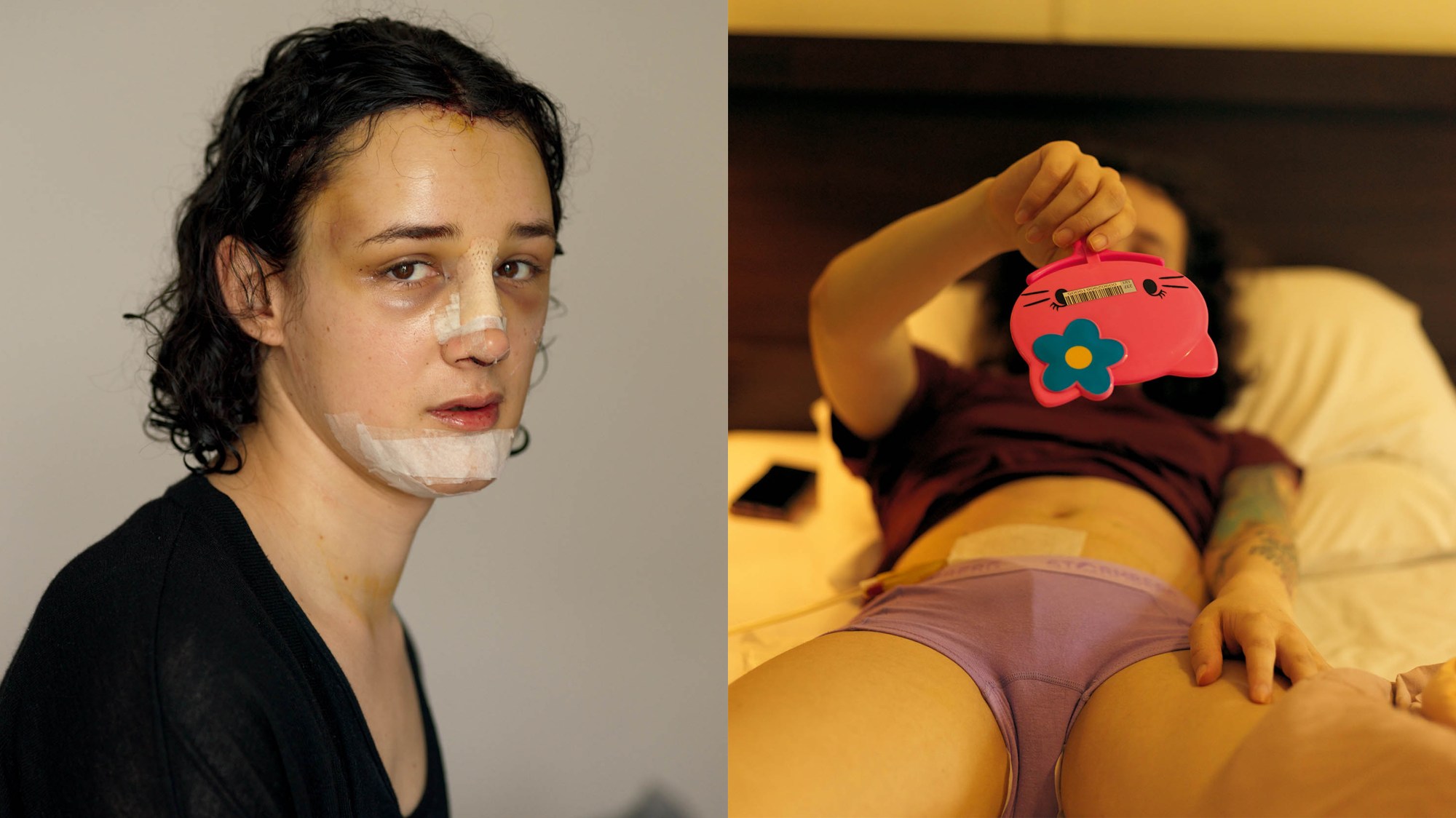In Norway, a person seeking gender-confirming treatment from its national health service must endure a long and arduous evaluation process. In most cases, these applications are rejected with little recourse to appeal. Though gender self-determination has become far easier in Norway since 2016’s Law on Legal Gender Change passed — which allows gender changes to be legally acknowledged without psychological evaluation or medical intervention — without access to the necessary surgical changes involved in transitioning, many Norwegians are left with little choice but to travel abroad, should they be able to afford it. “Needless to say, this is a matter of life or death,” the photographer Fin Serck-Hanssen says.
In Hedda, a new photo book of Fin’s, published by Loose Joints, we find an intimate dialogue between artist and subject around gender, constructed identity and sense of self. Hedda, the eponymous subject, travelled from Oslo to Buenos Aires and Bangkok in her early twenties to receive cosmetic surgeries and a vaginoplasty and brought Fin, a close family friend, to document this journey. The result is a collaborative story that acknowledges the pain — the bruising, the bandages, the sterile hospital setting — but also sensitively observes the beauty and empowerment found at this crucial juncture in Hedda’s life.
Though Fin has spent many years documenting people facing adversity, particularly in queer communities, he describes the creation of Hedda as one of the biggest challenges of his career to date; one, he hopes, that will “give a greater understanding and acceptance for non-binary identity”.
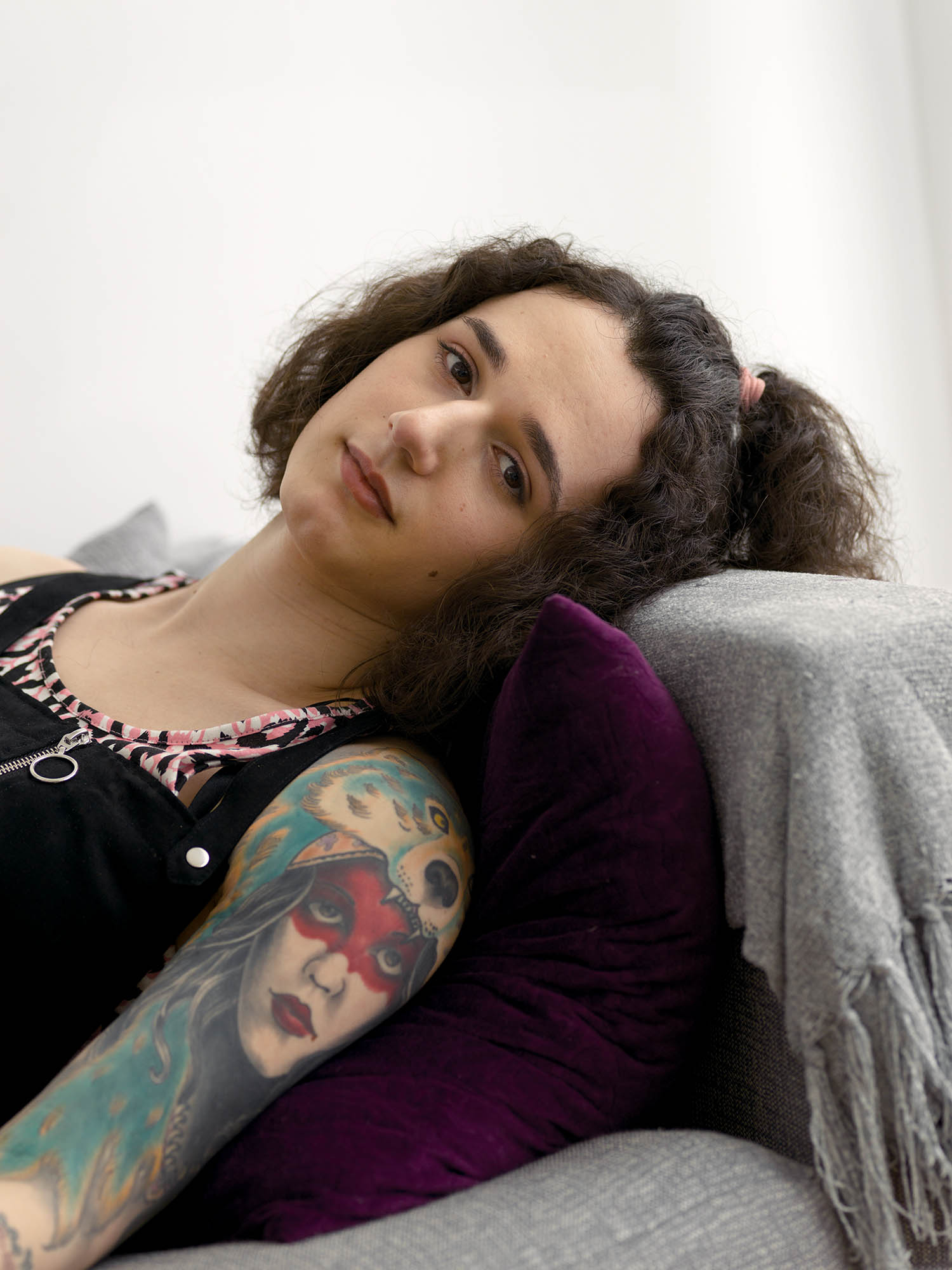
Can you give us a little bit of context to your work; what do you tend to shoot and what kind of stories do you feel most compelled to tell?
I started experimenting with photography in the late 1970s, documenting the punk and new wave subcultures both in the UK and Norway. I portrayed music bands at the beginning of their career — The Cure and Depeche Mode among others. Since then, I have been interested in portraying people whose stories I feel are deserved to be shared, following my fascination in the human body and its presence, its transformation as well as its vulnerability.
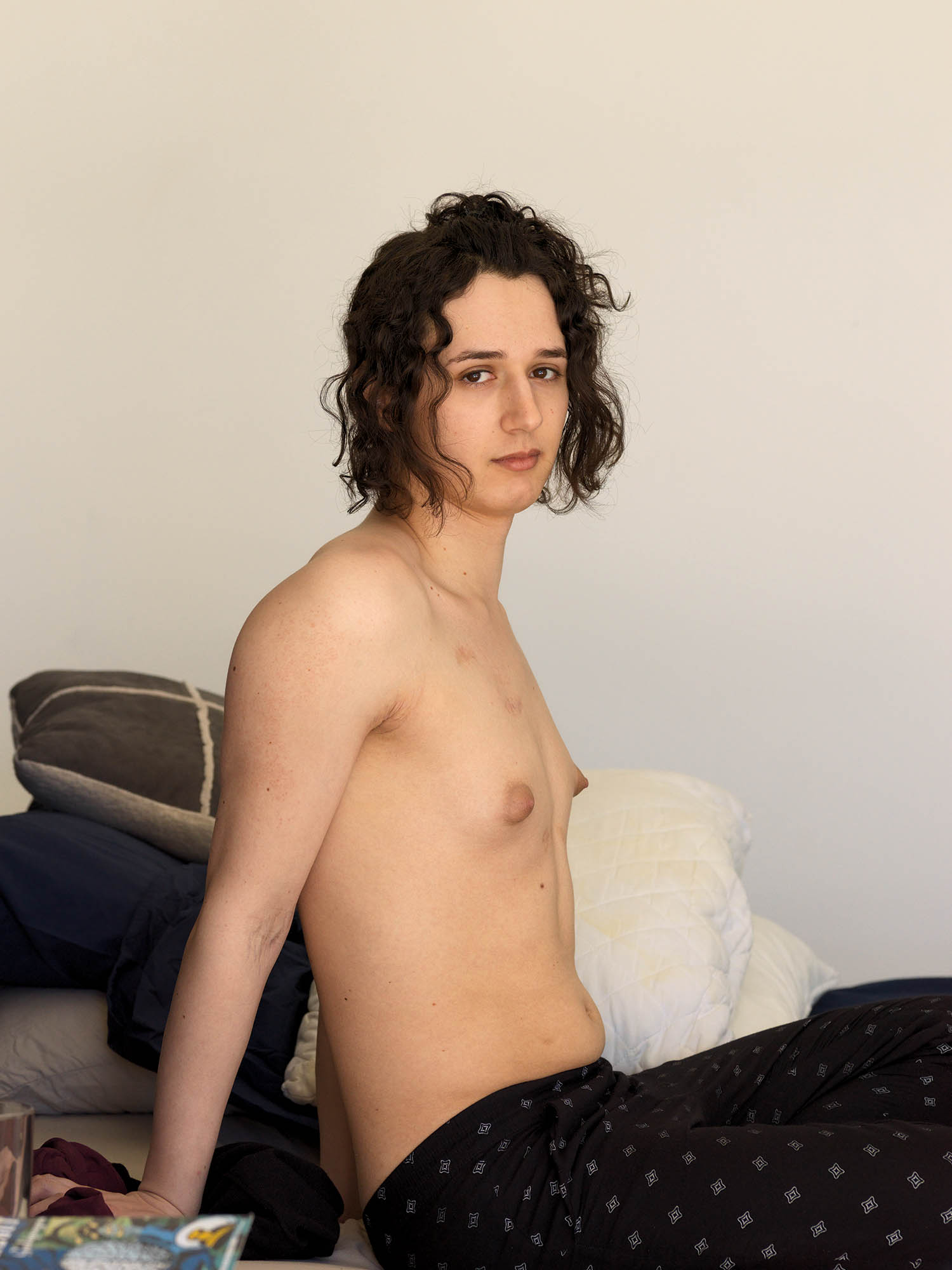
Expressing the harsh and painful experiences endured by people outside the mainstream, particularly in the queer community, seems crucial to your work – how did you come to Hedda as a story, and how well equipped were you to tell it as a photographer?
I am friend of Hedda’s mother and I have known Hedda since she was a baby. They invited me to follow them abroad and take part in Hedda’s transitioning journey to document her gender confirming process. Following her very first surgery in Buenos Aires, I showed images I took to Tommaso Speretta and told him about my idea to make a book. I felt the urgency to share Hedda’s commitment to a larger public, and follow my instinct to be a spokesperson for many in our community who still remain under- and in the worst cases mis-represented. Tommaso got in touch with Linda van Deursen and together they shaped the book in a way which I find delicate and powerful at the same time.
As a photographer, I myself stand outside the mainstream, and I will never be able to fully grasp the needs and desires of those I photograph. In this specific case, I can’t truly experience what it means to start a process of gender reaffirmation, since I have not gone through it myself. Nevertheless, I carry the signs of my own story like most people do, coming from difficult and in some instances mind-altering situations that echo many other human experiences. In this sense, photography is a practice of catharsis. I use the camera to focus on what I see out there, trying to as respectful as possible of the lives and stories of people I portray. Concurrently, I see in it the challenge as well as the possibility to reflect about the human being I am, including my own fragilities. I like to see myself as another out of many human beings who with the help of a piece of glass and metal in front of my eyes are trying to be just present.

What does the inclusion of Hedda’s own self-portraits and recurring use of handheld mirrors mean to the overall project? The use of selfies with Snapchat filters, for example, contrast with the stripped-back, austere nature of some of your portraits, like a gentle reminder of Hedda’s young age, despite the maturity required of her circumstances.
Hedda’s selfies are a reminder that Hedda has an everyday life like any other young woman. The mirror and cellphone are not tools for vanity but a guide to deconstruct one’s identity and build up a new one. Absurdly, it is like going through a second puberty. The selfies are also relevant to understand how Hedda perceived herself, in those moments of intimacy when me and my camera were not present. The process of constructing a self nowadays also goes through the way that we mirror ourselves, which is how we project to the outside our image and identity. The camera is being used as a way to create our own identity in a very fluid and open ended way. Furthermore, I think we tried to show that Hedda is like everybody else, a young girl taking selfies and enjoying simple daily life events, with her fragilities, dreams and both sad and happy moments. We did not want to present Hedda as a hero, so the selfies also serve this scope.

What can these images not capture from the journey Hedda has been on? The darkness of the book’s cover and opening pictures are described as a nod to the images “Hedda chose not to disclose of herself”…
The traces of her prior masculinity were a sensitive matter to Hedda, very often not visible to me. All the evident signs of the gender identity she was affirmed with at birth would awake strong and difficult emotions for Hedda to handle. These might be small details at the eyes of most people; indeed they are big and traumatic issues most trans people have to deal with. I couldn’t always capture these moments with my camera. Nevertheless, I didn’t perceive this as some sort of failure, but rather as a challenge. Together with Tommaso and Linda, we decided to slightly blacken a small selection of images Hedda didn’t feel comfortable with, hence she decided to take out from the book. This has nothing to do with an attempt to censor her identity; at the contrary it is to remind that the process of disclosing the self is never a linear one, and includes deeply dark moments.

How has the process of making this book shaped your relationship?
Hedda has let me take part in one of the most difficult and vulnerable moments in her life, challenging and burdensome. I greatly admire her courage and respect her emotional strength. As she came back home transformed, so did I. We both embarked in a transformative journey, in which our paths crossed. A few days ago I travelled to meet Hedda and give her a copy of the printed book. It was a very emotional moment. Surely, I was expecting to be touching, but what I didn’t expect was for her to be so empowering.
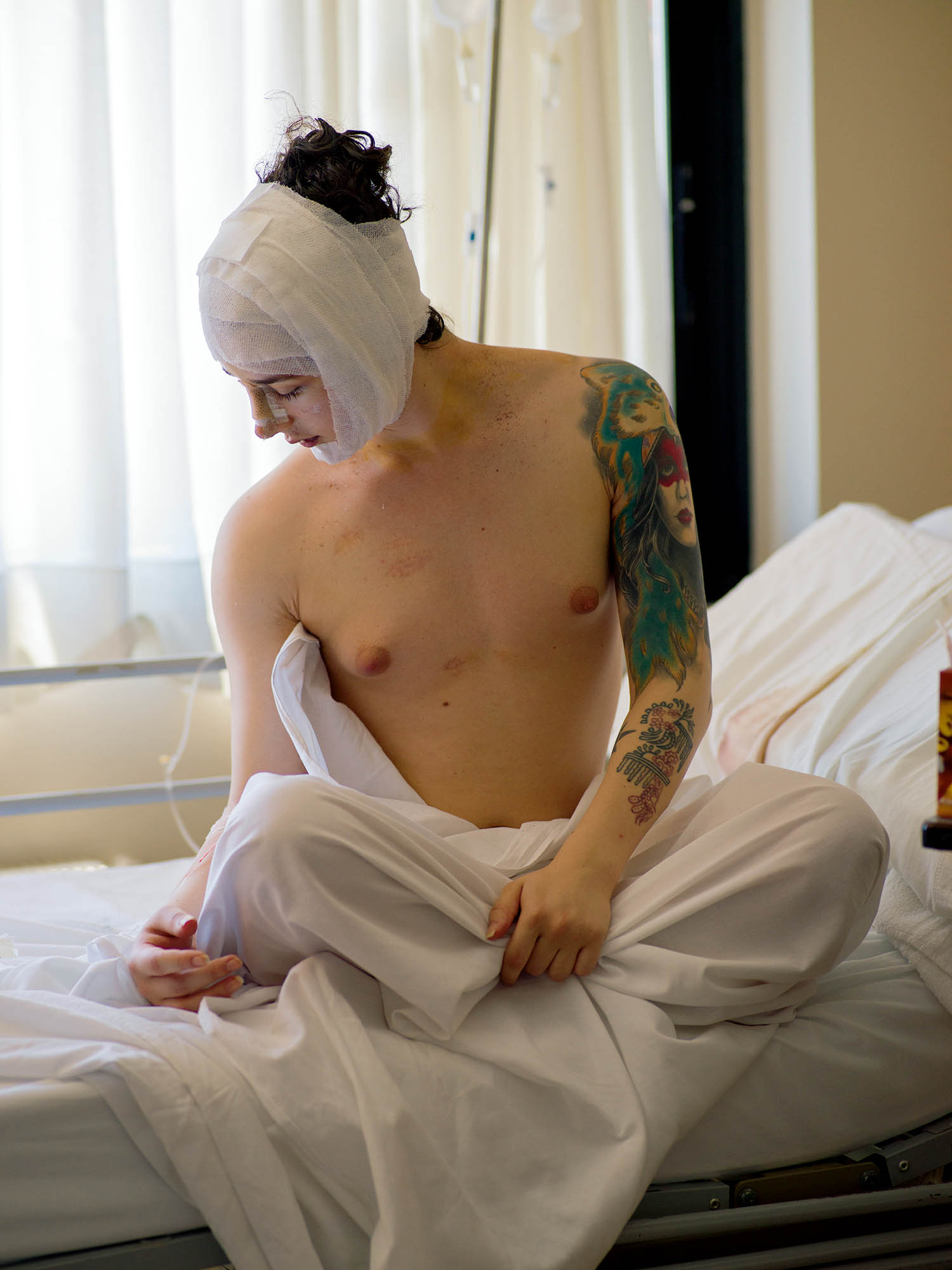
Is there a single image from this book that means the most to you or has a significance or poignancy beyond the others?
The image on page 12 is from our first trip to Buenos Aires. It has been taken while Hedda was waiting to do the first surgery. I think it captures how I experienced her hopes and fears in the very beginning of her process. The image is not only mysterious and open to the unexpected; the power of this image lies in the firm posture of Hedda, committed to leave behind the past and embrace a future that despite dark and uncertain still is an affirmation of who she wanted to be.
‘Hedda’ by Fin Serck-Hanssen is published by Loose Joints.
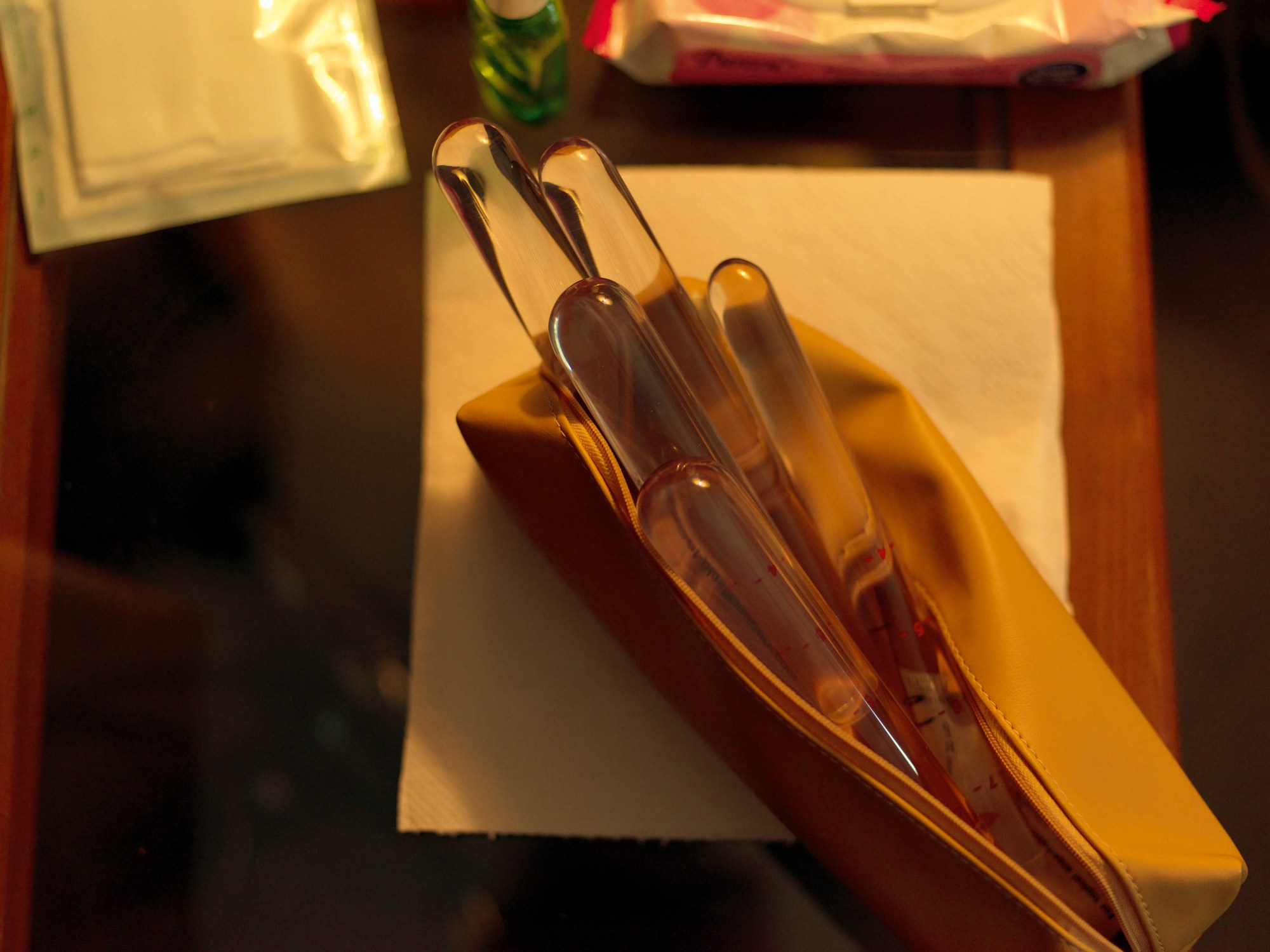
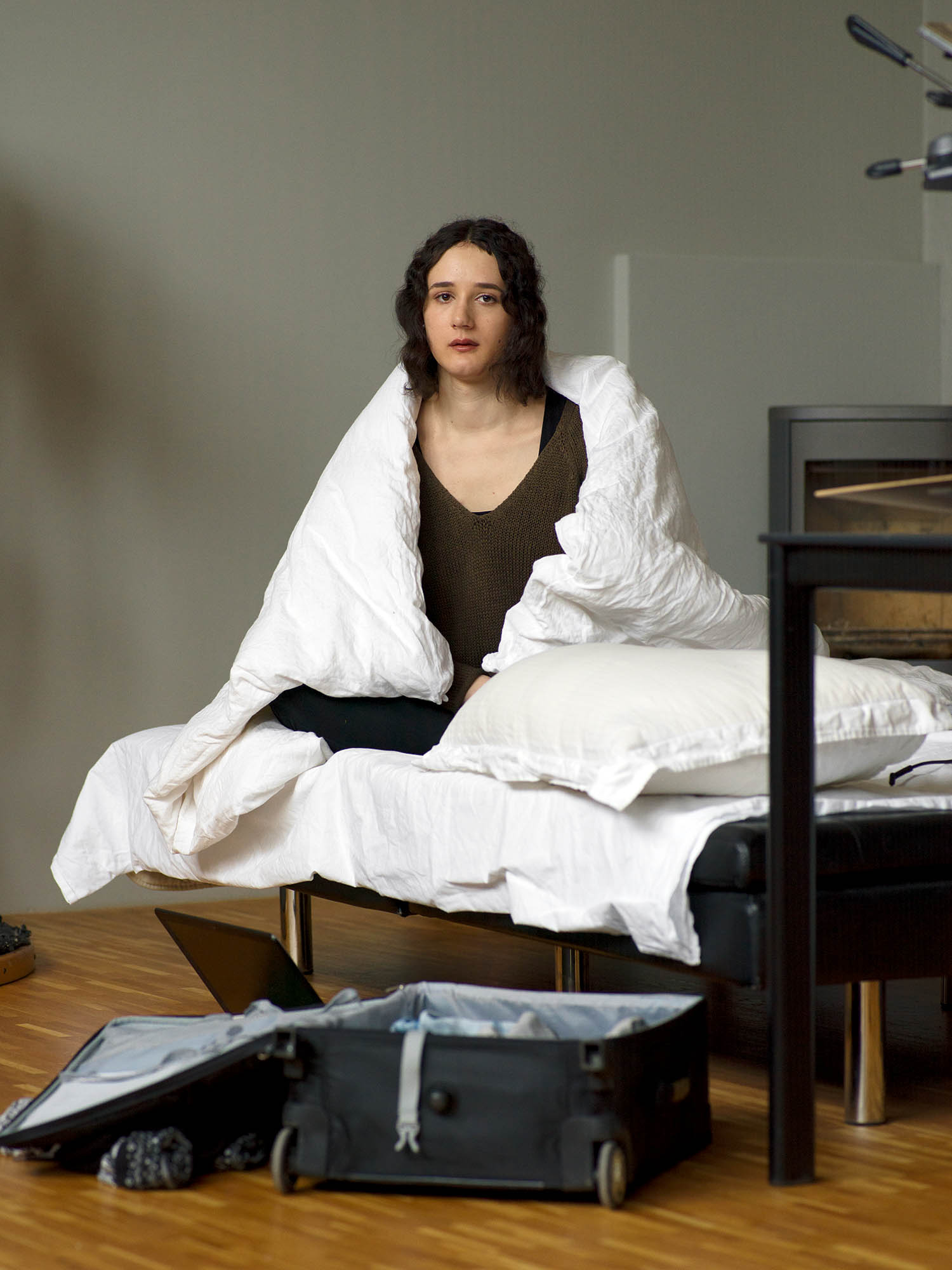
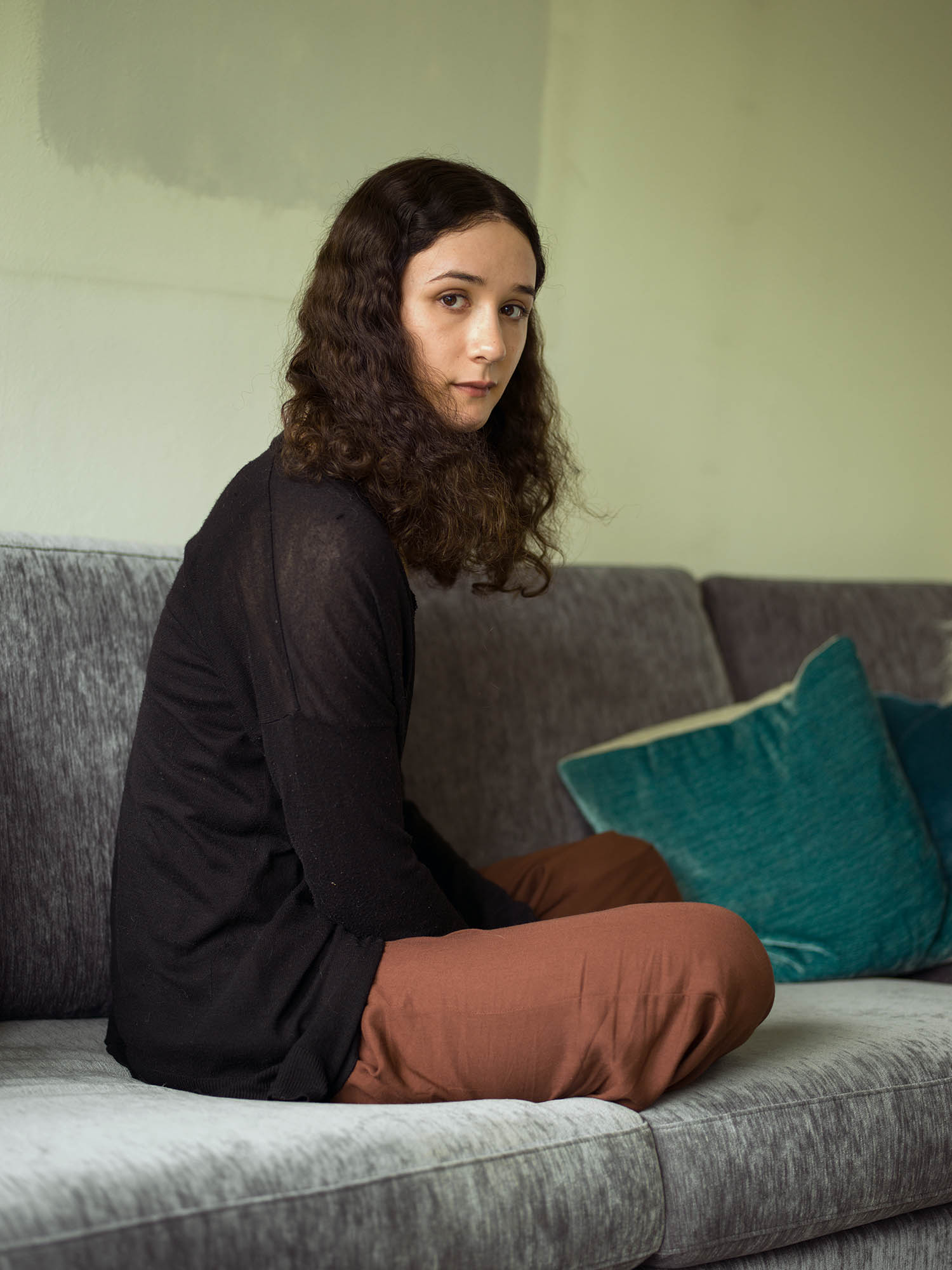
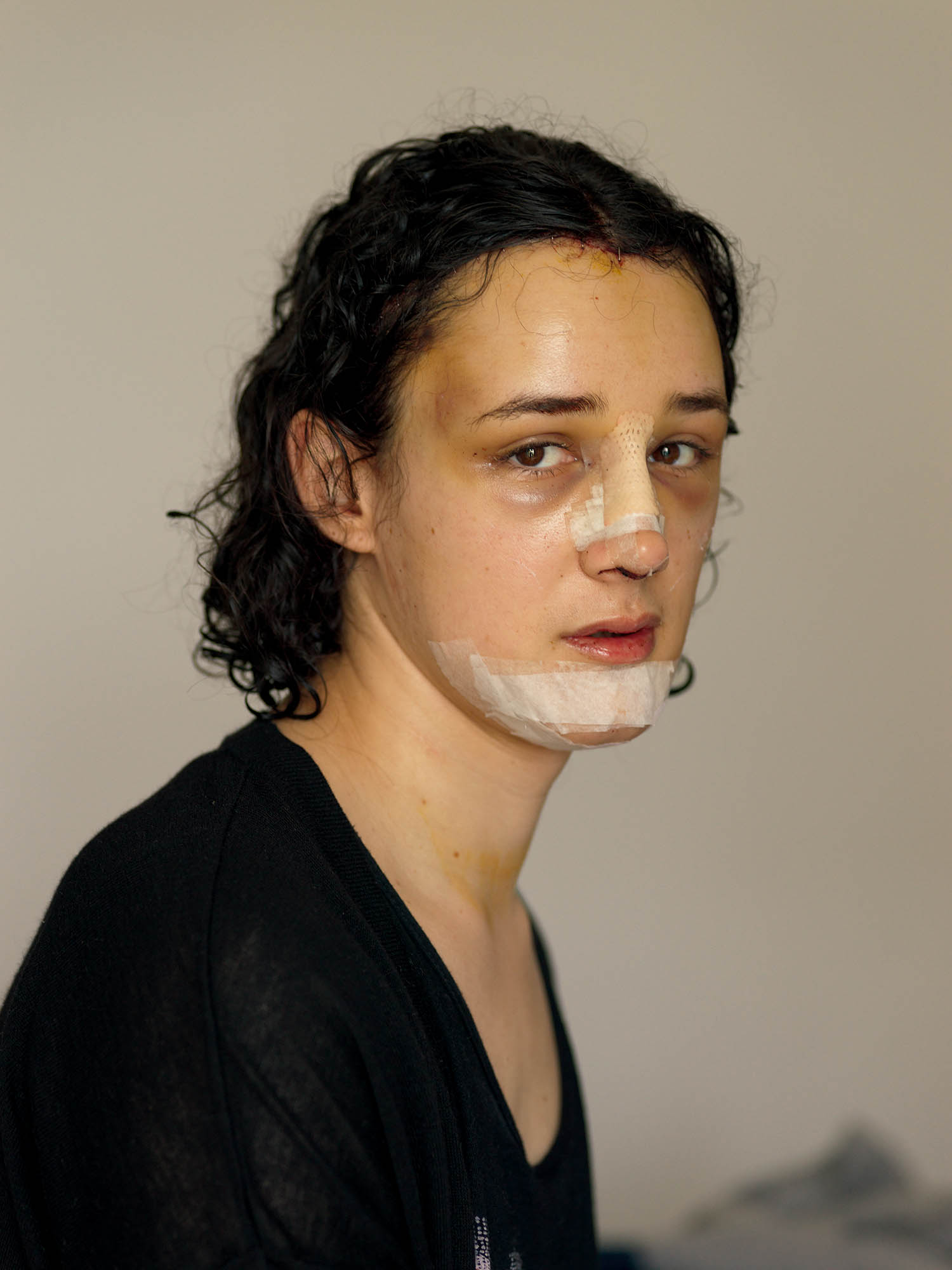
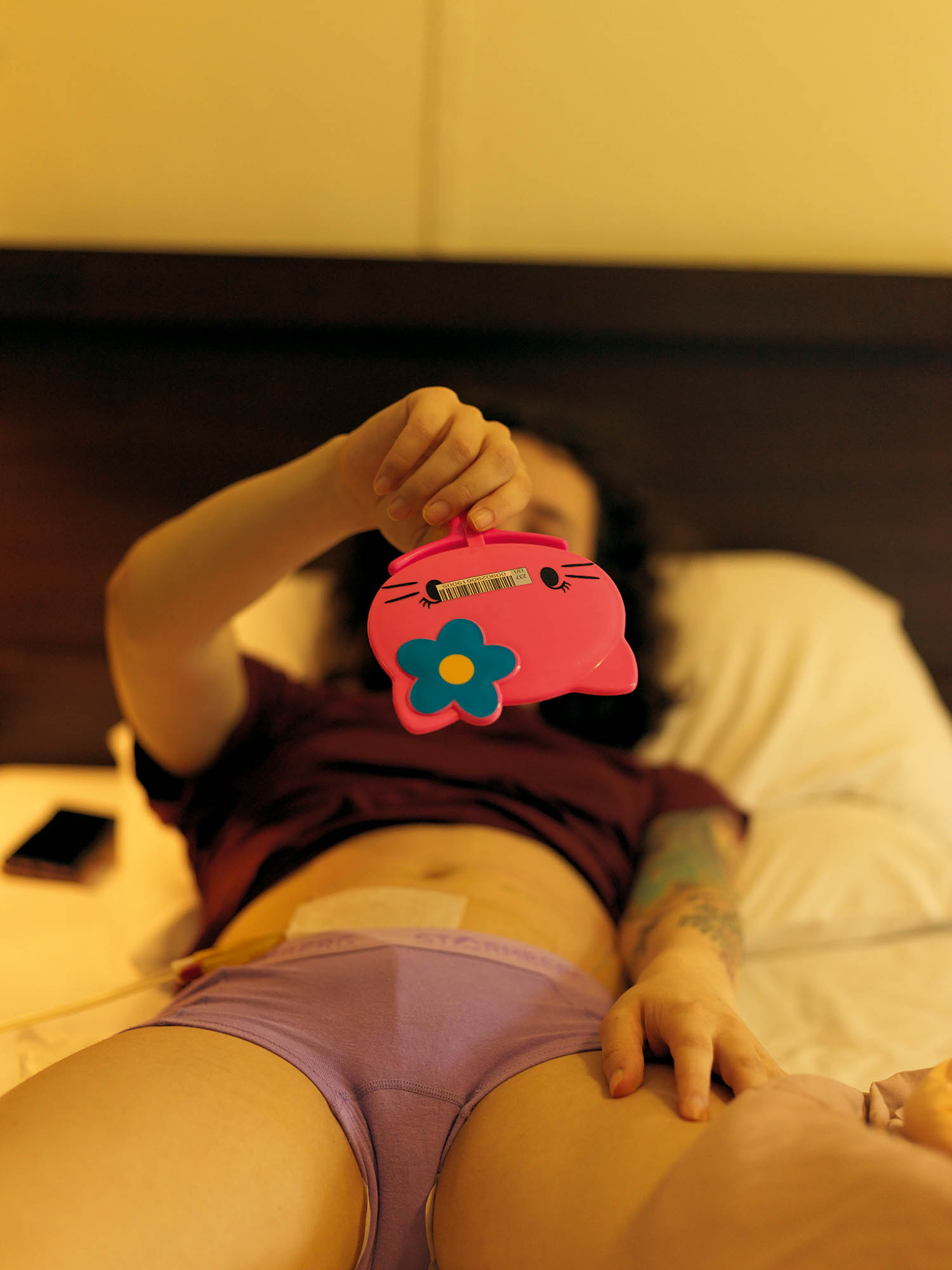
Credits
All images © Fin Serck-Hanssen 2021 courtesy Loose Joints
